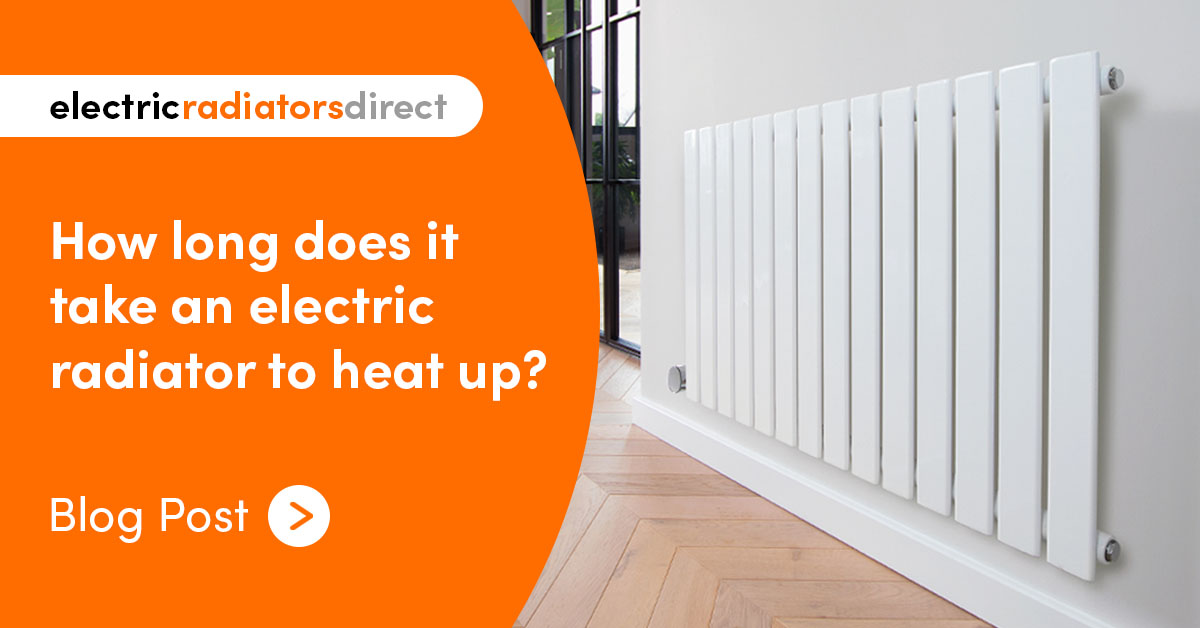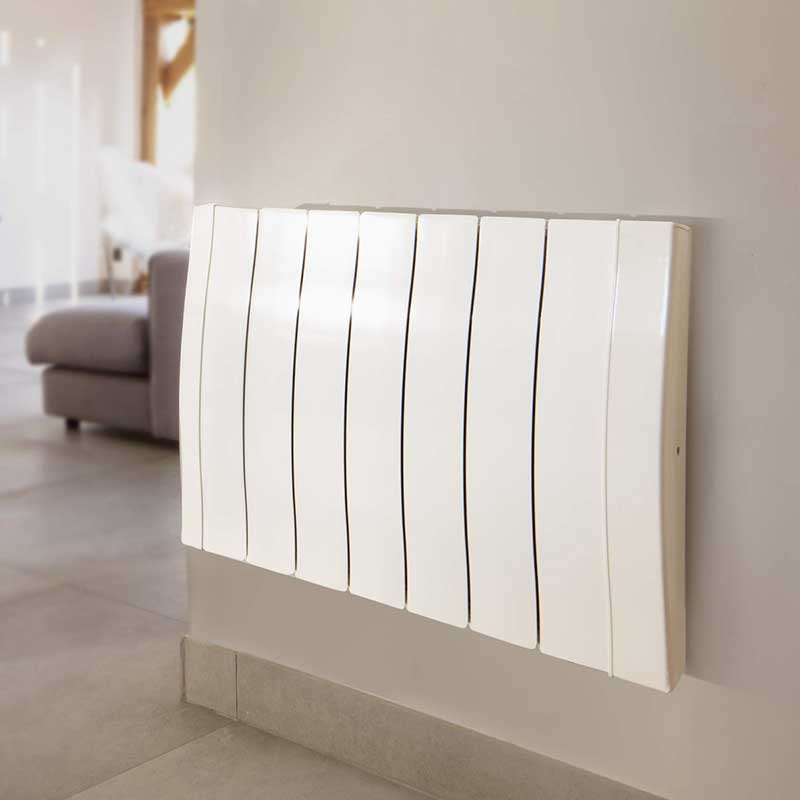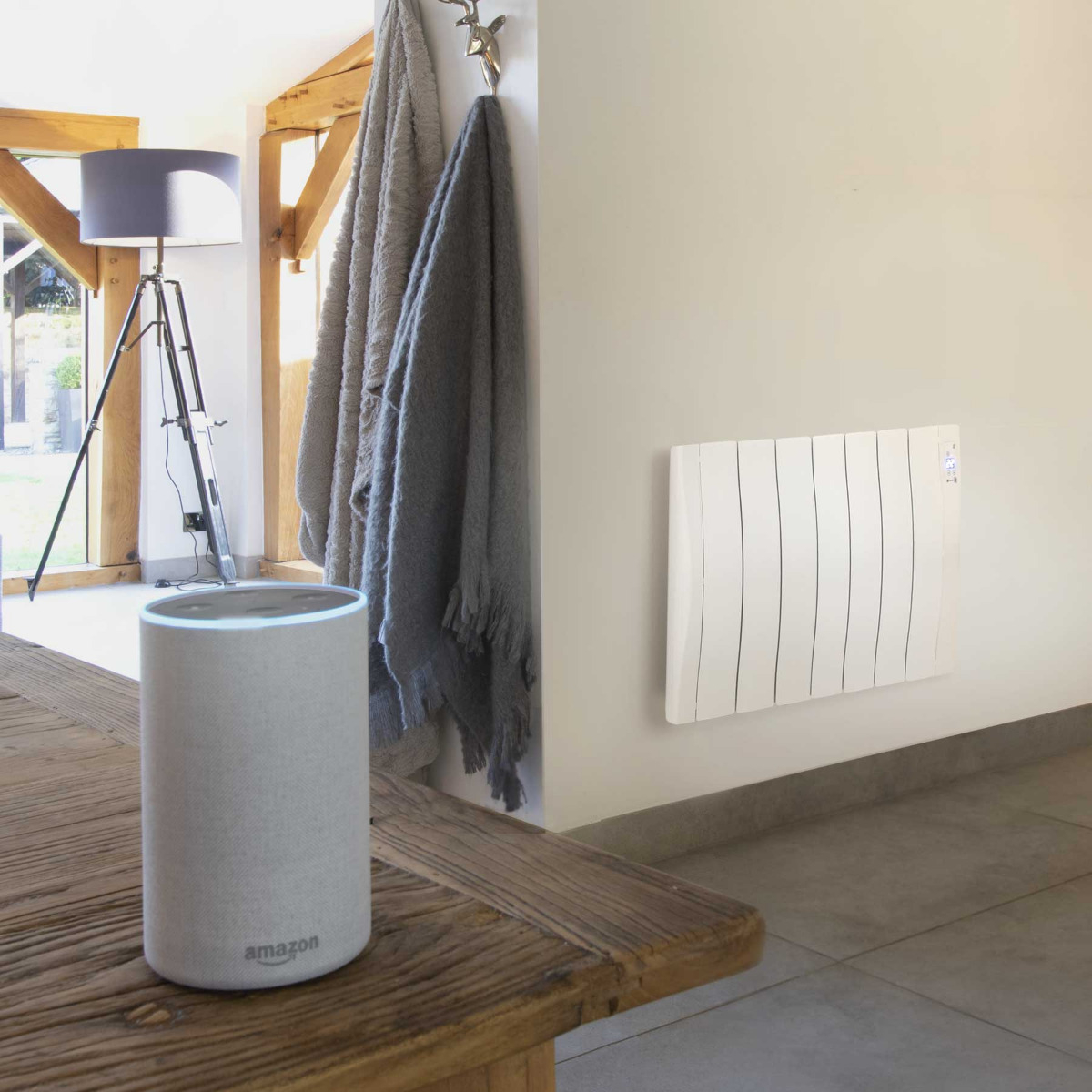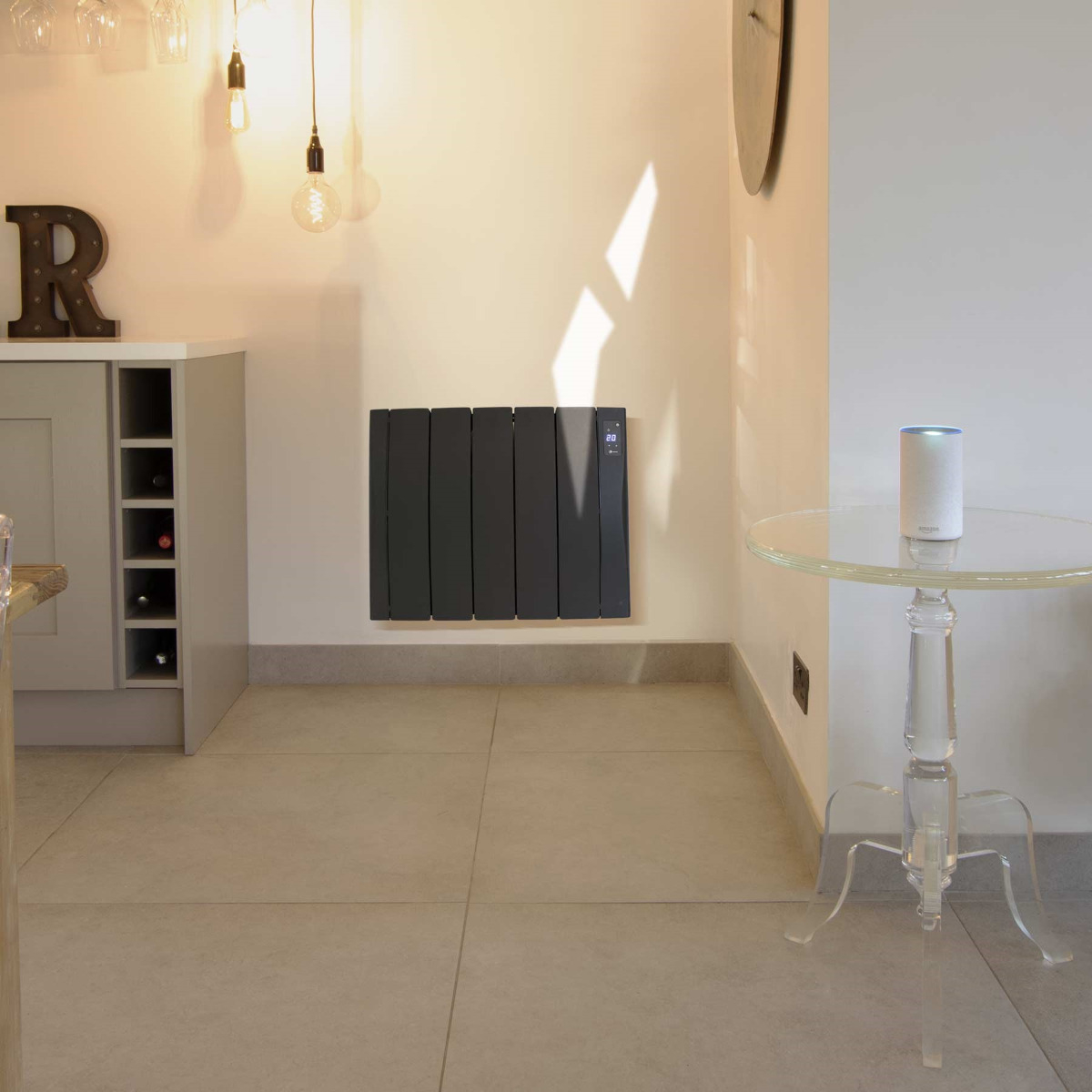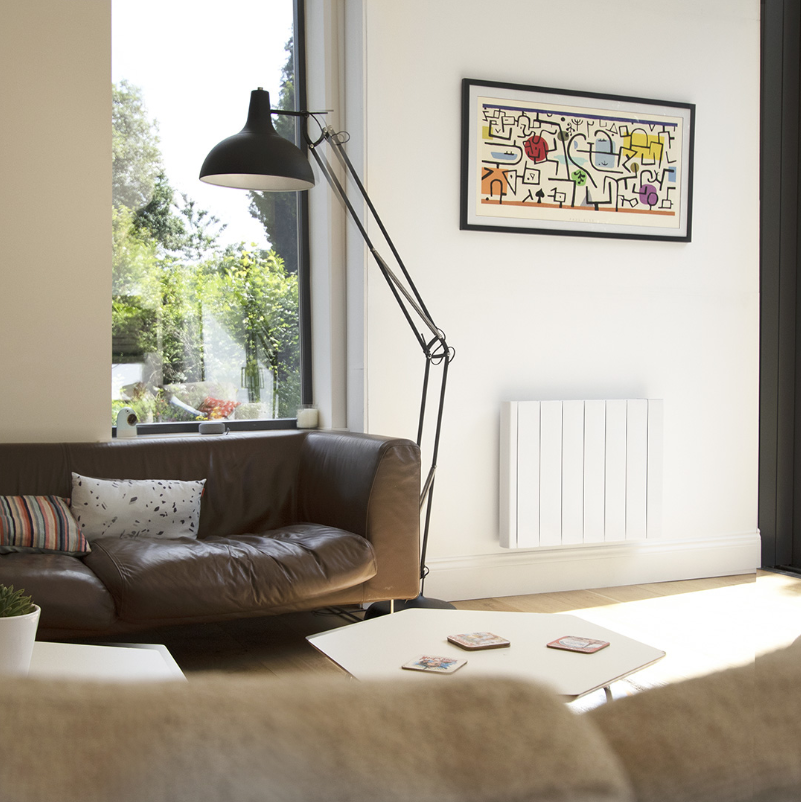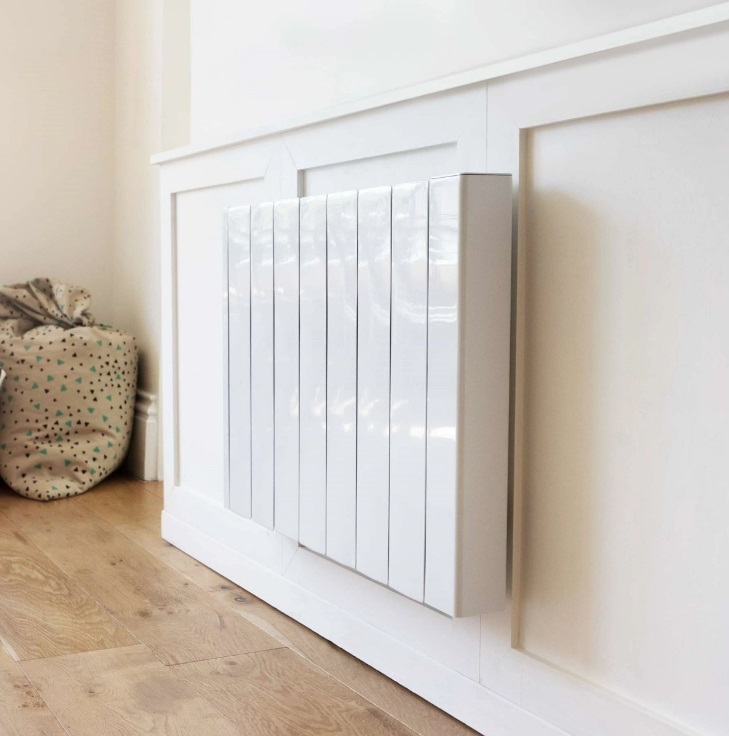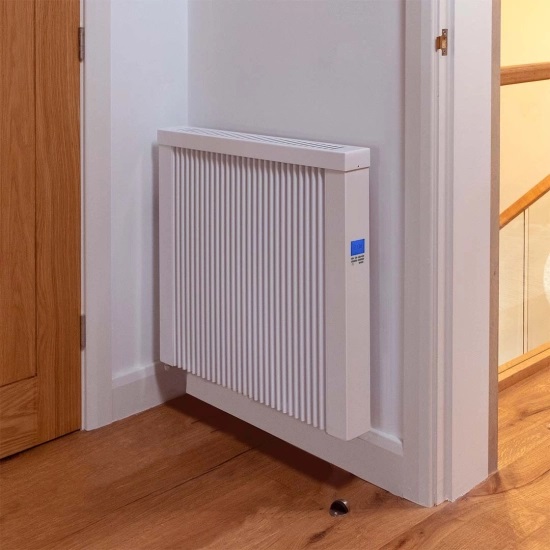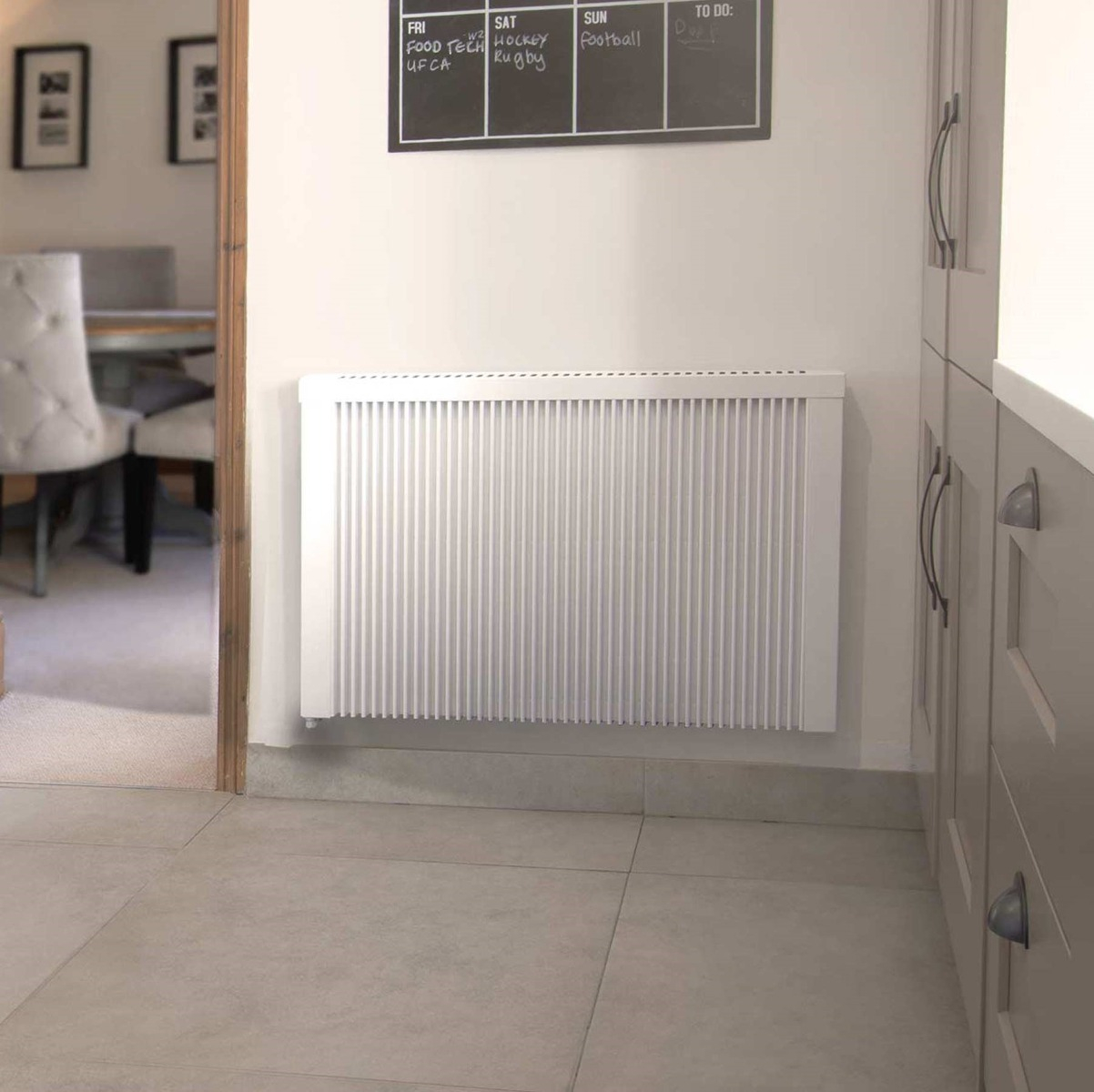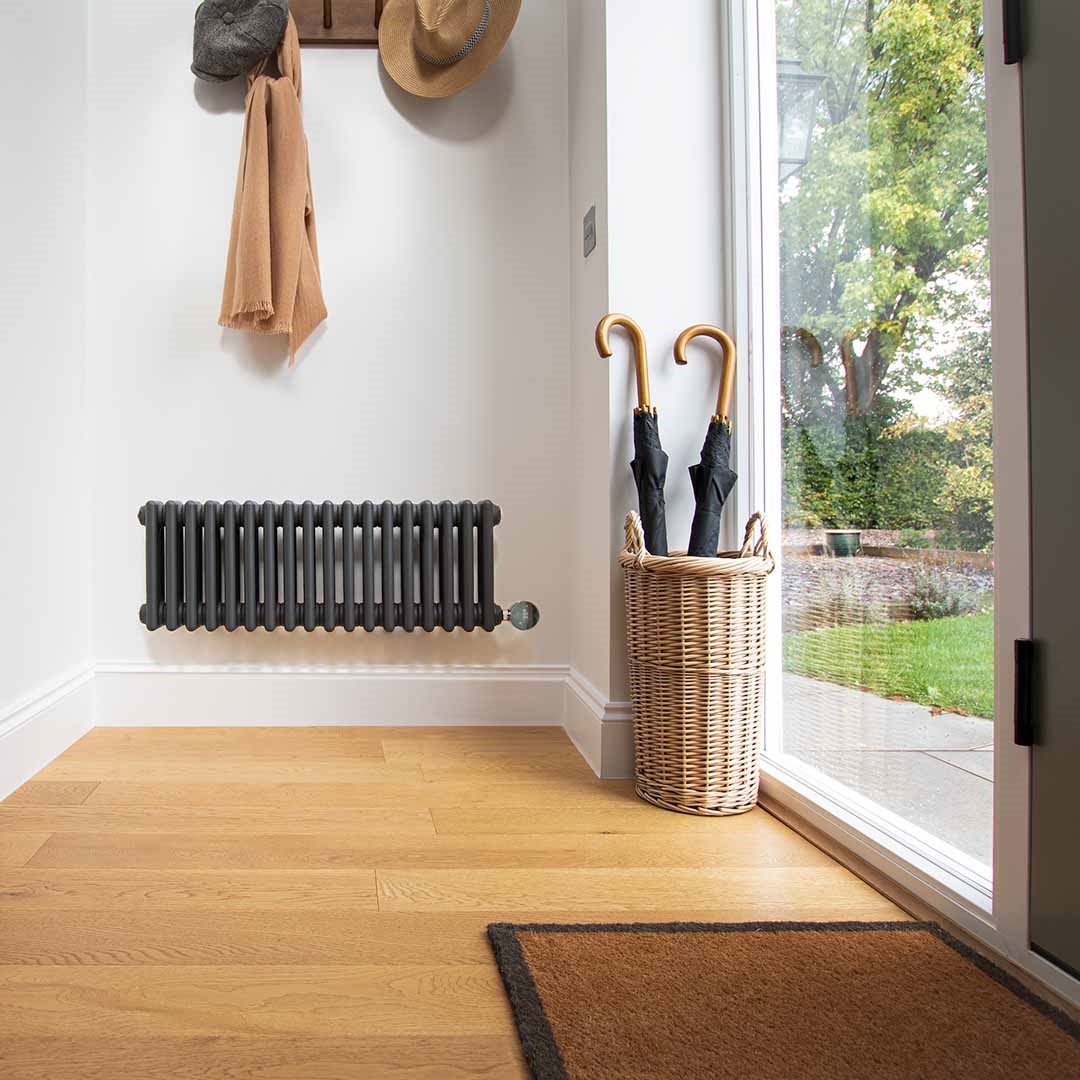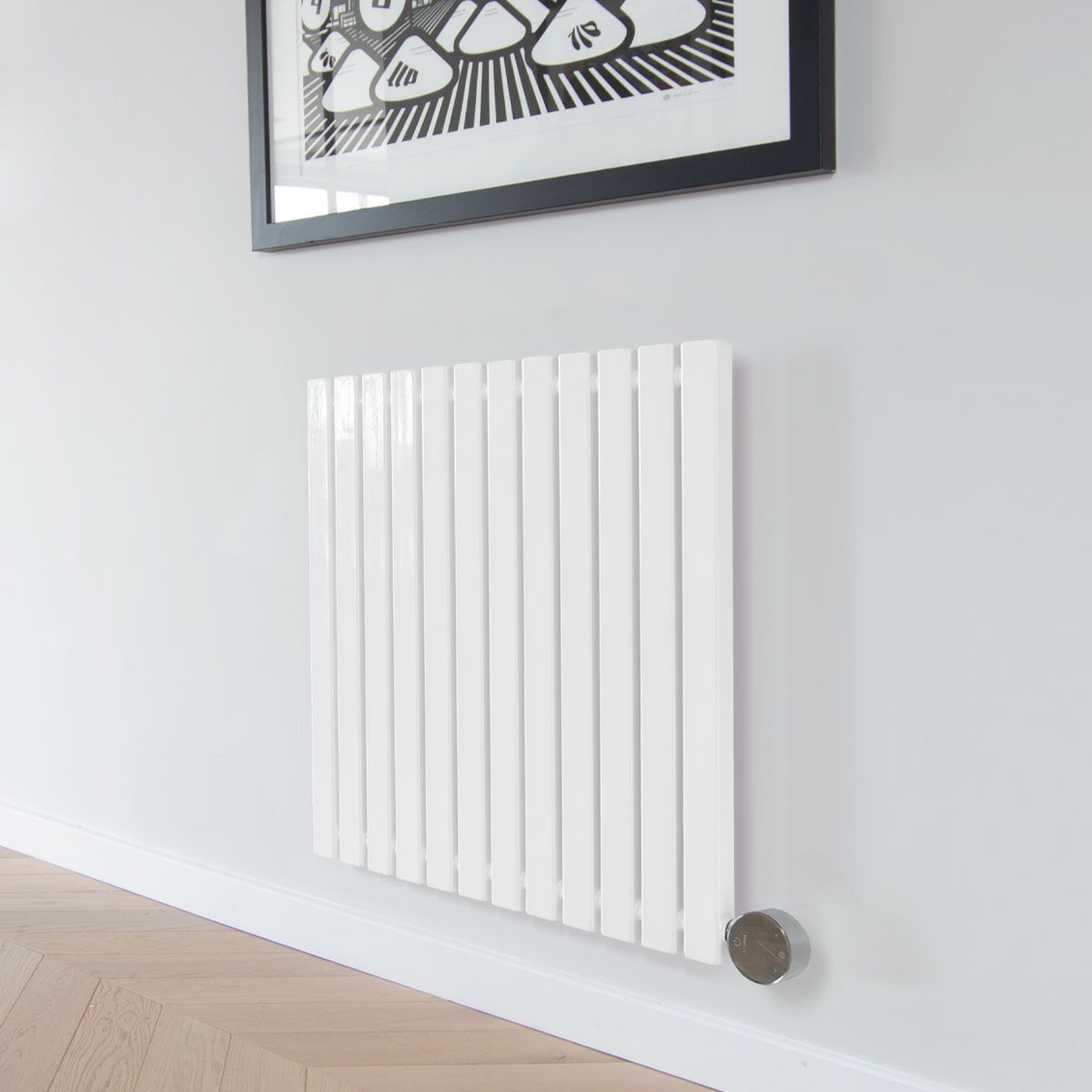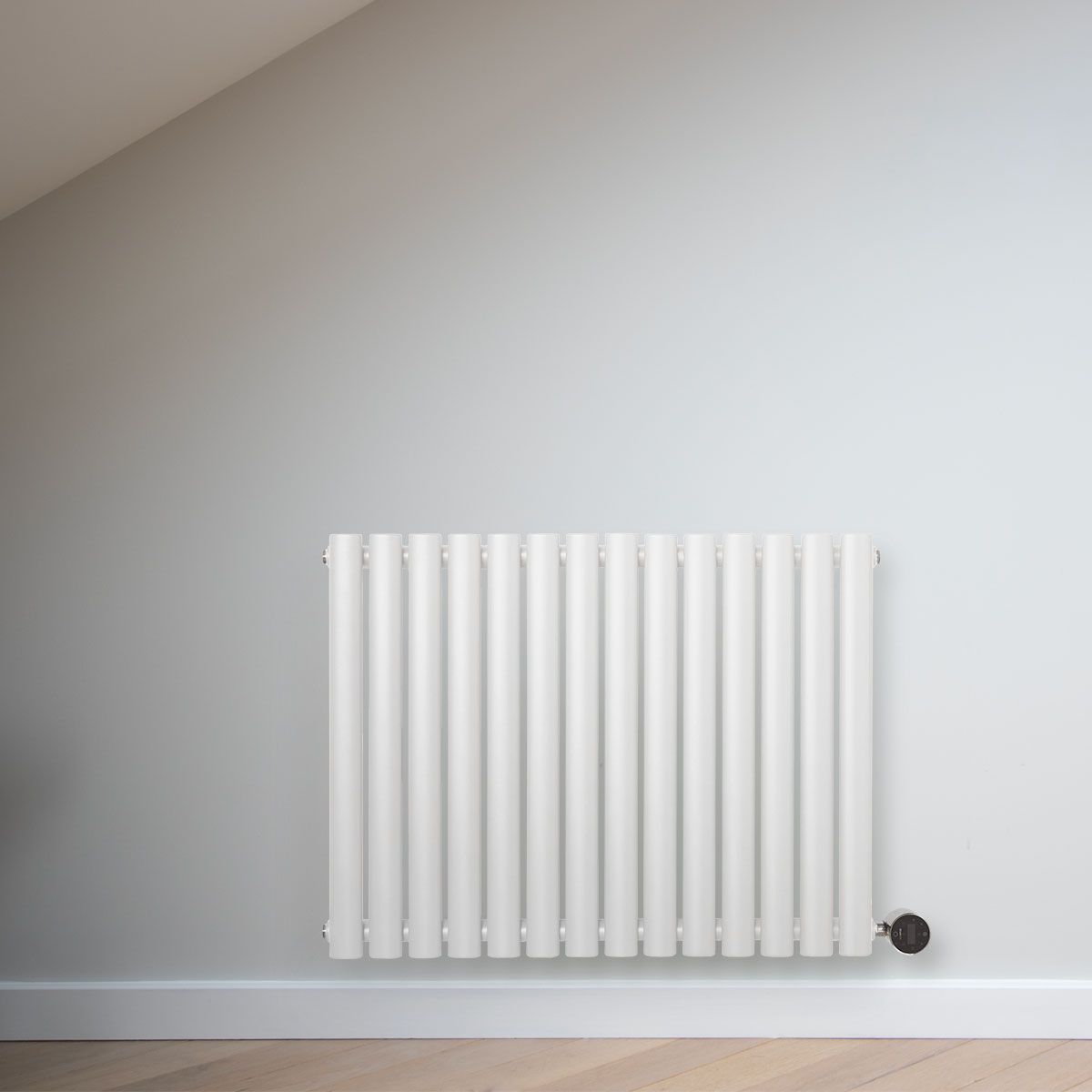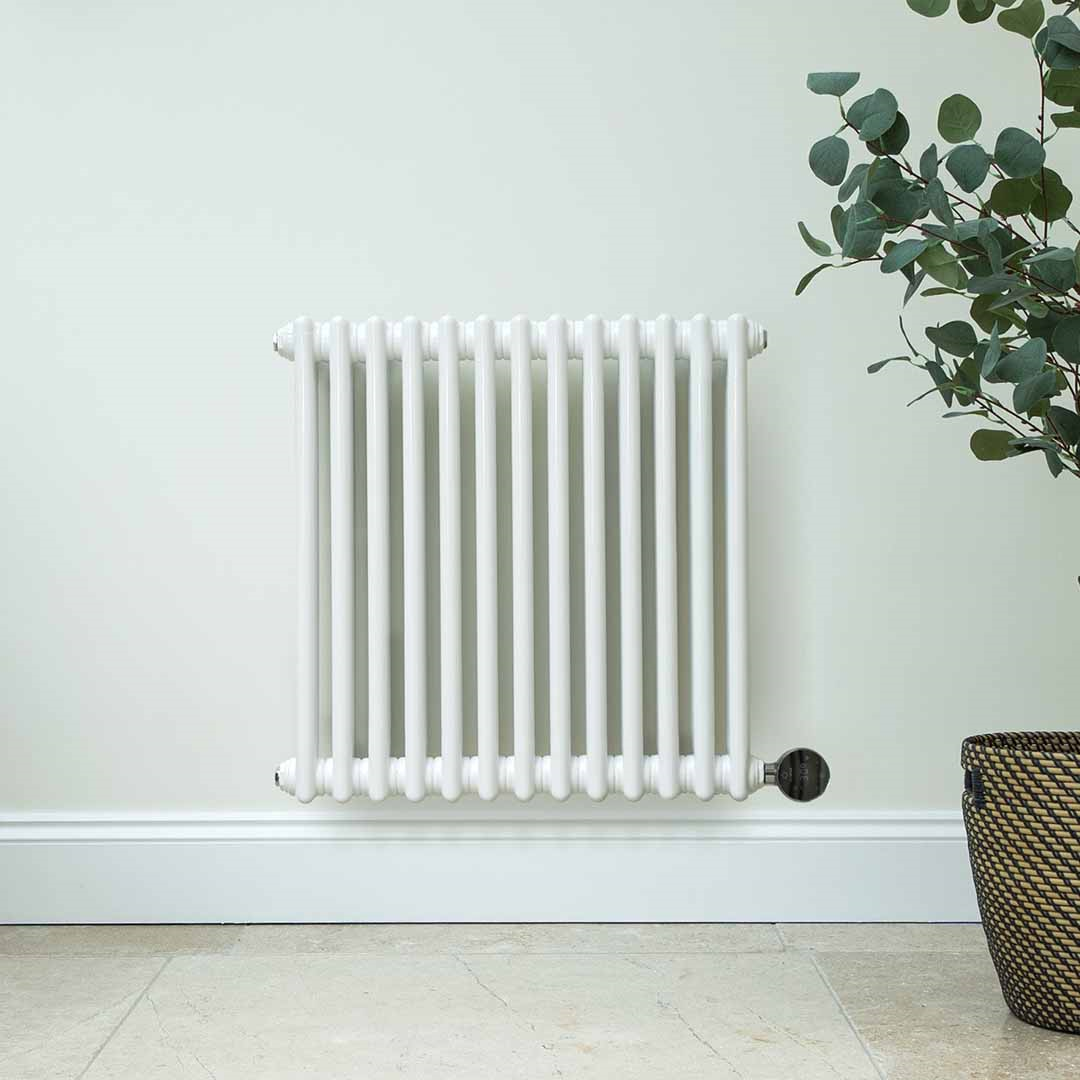Last updated: March 2024
There’s nothing worse than waking up in or coming home to a cold house. Homes with a central heating system are notorious for longer heat-up times, especially when it comes to poorly insulated pipes and air build-up affecting the efficiency of your radiators – but with electric, it’s a whole other story. If you’re looking for instant warmth at switch-on, electric panel heaters are your best bet, but that isn’t to say you’ll be waiting long to feel the effects of your electric radiators. The innovation behind them means you’ll be reaping the benefits within minutes – with certain features to take advantage of for an even more responsive approach. With different heating technologies, not all electric radiators heat up at the same speed – but is there a notable difference between them? Let’s take a look.
Dry thermal electric radiators
Dry thermal electric radiators have a unique approach to heating: iron heating rods enclosed in aluminium conduct heat along an array of fins inside the radiator body, completely free of the liquid you’d find in oil-filled and central heating radiators. With no heavy parts or risk of leaks, they’re ideal for fuss-free DIY-installation and the most lightweight radiator type, perfect for use as a portable heater.
Do dry thermal radiators heat up fast?
Yes! In fact, dry thermal electric radiators are the quickest of the three types to heat up. The fins maximise the interior surface area and the aluminium conducts heat incredibly quickly, equalling faster heat-up and cool-down times. As an example, our Haverland range will feel noticeably warm after just 1 minute of heating, with max temperatures reached within 15 minutes. Dry thermal electric radiators are a great choice for those that would rather not rely on a heating schedule and prefer to turn on their radiators as and when.
Bestselling dry thermal electric radiators
Ceramic electric radiators
Ceramic-filled electric radiators are similar to dry thermal radiators because neither use internal liquid to create warmth. The difference is in the name – instead of being enclosed in aluminium, ceramic electric radiators house their heating elements in a series of ceramic blocks or stones inside the units' body. As these high-density blocks hold heat for a long time after the radiator has stropped drawing power, efficiency is improved which can help to relieve running costs. Ceramic electric radiators benefit from an increased amount of radiant heat, making them ideal for spaces that struggle to maintain steady temperatures.
Do ceramic radiators heat up fast?
While not as fast as dry thermal electric radiators, ceramic radiators still heat up quickly due to the wire elements embedded in the heating blocks. As an example, the iQ Ceramic will be noticeably hot to the touch and heating your room within minutes of switch-on, reaching a surface area of approximately 60ºC in under ten minutes. Their slightly slower heat-up times are made up for by how long they take to cool down after the radiator has stopped drawing power. Your radiator will spend less time turned on whilst still maintaining the same level of comfort – great for slimming down your heating bills.
Bestselling ceramic electric radiators
Oil-filled electric radiators
Oil-filled electric radiators heat using an electrical element immersed in thermodynamic oil contained entirely within the radiator body. Pre-filled on delivery and engineered to spread evenly throughout the radiator, warmth is dispersed throughout the room via a combination of convection and radiation. Oil-filled radiators are heavier than their oil-free counterparts but are the most versatile in terms of appearance.
Do oil-filled radiators heat up fast?
Oil-filled radiators retain heat better than dry thermal radiators but are the slowest of the three to heat up. That isn’t to say you’ll be left in the cold for long; our Ecostrad designer radiators use unique Fast-Flo technology to aid the circulation of the heating fluid inside. As the oil begins to travel, parts of the radiator will feel warm within a few minutes, but it can take up to half an hour before the radiator feels warm all over. To compensate this, slow heat-ups give way to slow cooldowns, helping rooms maintain comfortable temperatures for longer. This makes them ideal for spacious areas and rooms that tend to be used all day. If snappy, responsive heat is of top importance to you though, oil-filled electric radiators may not be the most suitable option.
Bestselling oil-filled electric radiators
Want to learn more about the differences between ceramic and oil filled radiators? Check out our video to find out which is right for you.
Best features for quick heat-up times
If you're looking for ultimate responsive warmth, take advantage of these features:
Precision digital thermostats
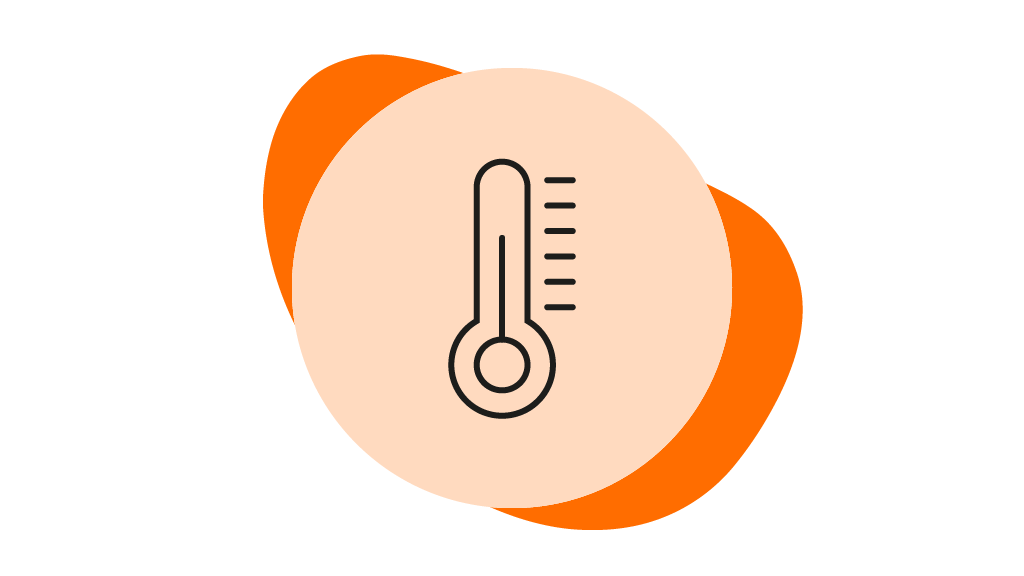

Electric radiators fitted with precise digital thermostats ensure energy usage is at the minimum necessary to maintain comfortable warmth. By carefully monitoring room temperature, the radiator will remain at its specified level without fluctuation, maintaining steady, accurate heating 24/7.
Geolocation


A cutting-edge feature of the Technotherm KS DSM ranges, geolocation will detect your proximity to the radiator and turn itself on and off accordingly. While this works similarly to adaptive start, it takes away any need for guesswork – perfect for those who don’t keep to a regular routine.
Adaptive start


Activating this setting will allow your radiator to pre-heat for a specific time, so you can schedule your heating to the exact moment you need it. Whether it aligns with your morning wakeup call or nightly return from work, there’s no waiting necessary with adaptive start.
24/7 programming


Setting schedules is a sure-fire way to make your heating align with your needs. Adjustable hourly, daily, and weekly, be as specific or as general as you want with multiple temperatures and heating modes to suit your lifestyle to a tee. With WiFi app control, adjust your schedule even when you’re on the go.
If your radiator is taking too long to heat up
There may be some rare instances where your radiator isn’t heating up as quickly as you’d like. If this is the case, here are a few things to keep in mind, and remember, our team of expert heating consultants are available Monday-Friday should you need advice.
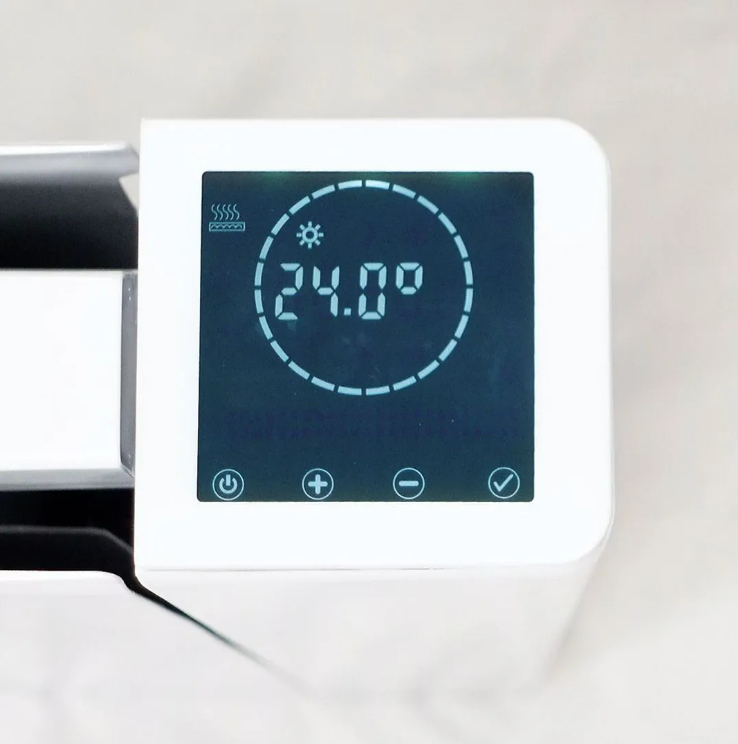

-
Check the wattage – Room size and insulation levels affect heating requirements which is why the right wattage is essential. Too small, and you’ll risk slow heat-up times and generally underheating your space. To avoid this, check out a product’s heats-up-to-area or use our radiator calculator to find the perfect size.
-
Check the programming – There are certain energy saving functions that, if activated, will purposefully have your radiator running on a lower temperature and will affect heat-up times. Features like Comfort Mode, Low Surface Temperature and Open Window Detection are designed to save energy and keep your radiator at a touch-safe level. Make sure to check the settings on your digital programmer or heating app to ensure the programming is to your specification.
-
Check the thermostat – Your radiator’s thermostat is usually fitted at floor-height, which tends to be 1-2 degrees colder than at height level. The sensor can sometimes be skewed by hot or cold spots such as direct sunlight, hot water pipes or underfloor heating. If your radiator has a temperature offset feature, you can adjust it to compensate for the difference between room temperature and that picked up by the sensor.
-
Check fluid levels – Although rare, if any fluid was lost during the installation of your oil-filled radiator, the heating element will be affected by incorrect fluid levels. Always refer to a professional if you require a refill of your radiator.
Looking for the best electric radiator for your home? Check out our buying guide.
Enjoy fast, responsive warmth with electric radiators
Whichever way you slice it, our electric radiators are set to provide you with comforting warmth within minutes of switch-on. For lightning-quick heat-up times ideal for ad-hoc heating, check out our dry thermal radiators. For longer-lasting warmth and higher max temperatures, check out our ceramic radiators, or browse our range of oil-filled electric radiators for designer aesthetics and superior heat-retention. For more information on any of our products, get in touch with our friendly sales team today.
Key learnings
- Dry thermal electric radiators are the fastest to heat up but also the fastest to cool down. Ceramic and oil-filled radiators take slightly longer, but their superior heat retention means slower cooldowns for increased efficiency.
- Radiators with precision digital thermostats and features like adaptive start, 24/7 programming and geolocation can help improve heat-up times.
- If your electric radiator is taking too long to heat up, make sure the wattage is the right size for the room and your radiator hasn’t been set to an energy-saving mode that reduces surface temperature.






